Quick Start
This section covers the following procedures to enjoy a quick start:
Vehicle setup
Propeller mounting
Manual driving in rover mode
Manual flight in multicopter mode
1. Vehicle Setup
The onboard Kerloud autopilot is loaded with a proprietary firmware, and parameters are tuned well with real flight tests in factory. In most cases, users do not need to change those onboard parameters such as attitude and position control gains.
Due to transport vibrations and district differences, users are strongly recommended to conduct sensor calibration for compass, gyroscope and accelerometer sensors to avoid unexpected behaviors. We can easily do so by using the provided micro USB cable or telemetry set to connect the autopilot with a computer running Qgroundcontrol (QGC) software. Our customized QGC software supporting the flying rover can be downloaded from https://github.com/cloudkernel-tech/qgroundcontrol/releases/download/v0.2/QGroundControl_flyingrover.AppImage.
The well-tested environment is Ubuntu 18.04, and commands below are needed to run the provided QGC image:
sudo usermod -a -G dialout $USER
sudo apt-get remove modemmanager -y
sudo apt install gstreamer1.0-plugins-bad gstreamer1.0-libav gstreamer1.0-gl -y
# Then logout and login again to enable the change to user permissions.
chmod +x ./QGroundControl_flyingrover.AppImage
./QGroundControl_flyingrover.AppImage
1.1 Airframe Setting
This step is not necessary for quick start, since the airframe is configured in factory already. The default airframe for Kerloud Flying Rover products is Flying Rover (Tricopter Flying Rover for Scorpion V1), depicted as:

Caution
The onboard parameter settings will be reset to the factory version if users click the “Apply” button in the upper right corner. Please consult after-sales support to recover factory settings if the button is clicked by mistake.
1.2 Sensor Calibration
Sensors can be calibrated by following the tips in QGC:

Users are suggested to connect the GPS to the autopilot before compass calibration, as the external compass is equipped in the GPS module, then both the onboard and external compasses will be calibrated. Users should keep the autopilot absolutely static during gyroscope calibration, as even small motion can cause calibration failure or lead to unacceptable gyro bias. The flying rover can be placed on flat table surfaces or vertical walls for accelerometer calibration. Hand-hold calibration is not recommended.
1.3 RC Calibration and Setup
We can select either right hand mode (Mode 1, Japanese Hand) or left hand mode (Mode 2, American Hand) for RC operation. By clicking the Calibrate button, users can complete the RC calibration easily by following QGC commands.
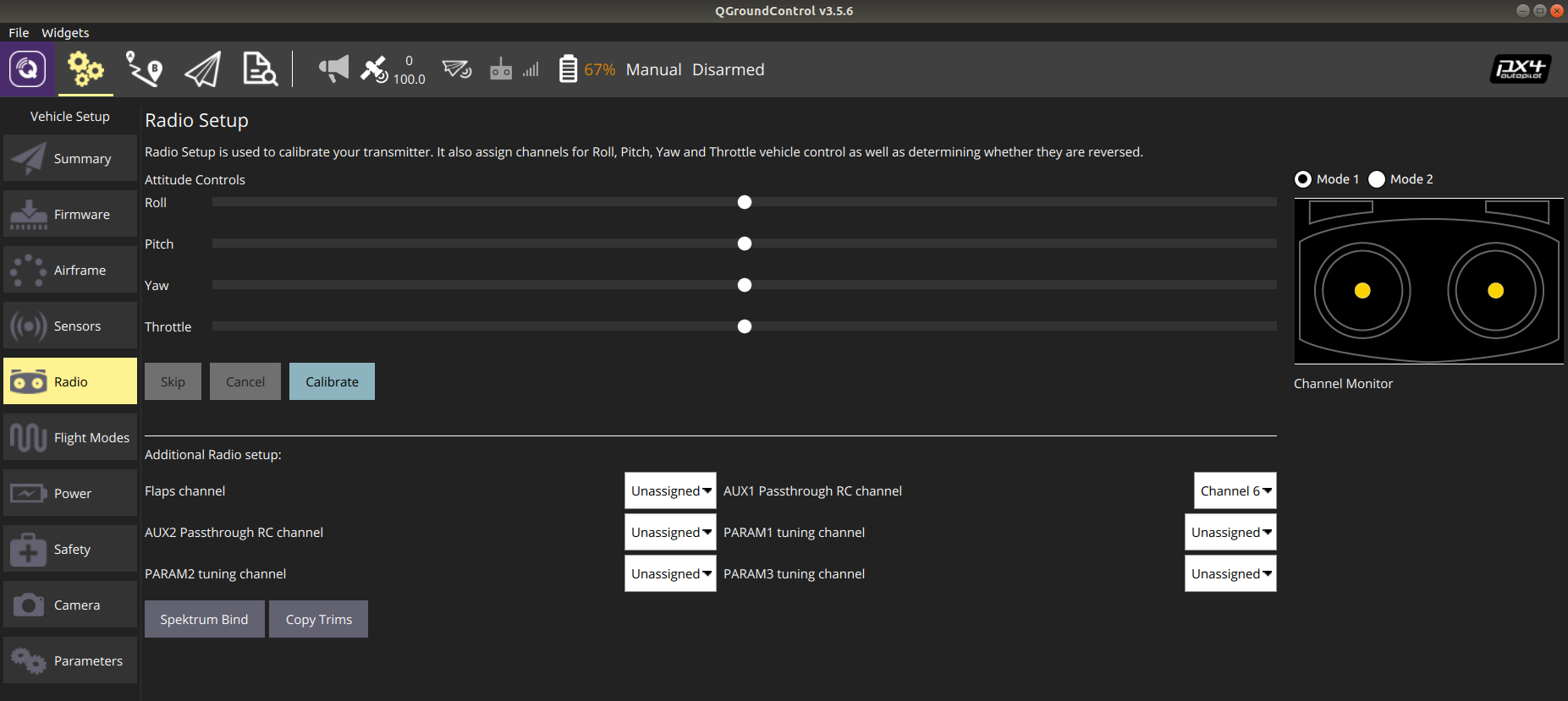
Besides, we need to assign a channel (e.g. channel 6) for AUX1 for configurations supporting both forward and reverse driving, such as Scorpion V1. And a vehicle type switch channel (channel 8 by default) has to be set for multicopter and rover transition in manual operation. If users need to specify another channel for vehicle type transition, then the parameter RC_MAP_TRANS_SW must be set with the corresponding channel number.
1.4 Flight Mode Setting
Users should allocate one channel (e.g. channel 5) for flight mode setting, and another (e.g. channel 7) for offboard control triggering. Users are suggested to set at least STABILIZED, POSITION and OFFBOARD modes for Kerloud Flying Rover.
The STABILIZED and POSITION modes are used for manual control via the RC transmitter. To highlight here, the STABILIZED mode is for experienced pilots wherein joystick inputs are mapped to the attitude reference, while joystick inputs in POSITION mode are feed into the velocity reference. In the OFFBOARD mode, the uav is commanded by the onboard computer to achieve autonomous tasks such as waypoint flight, trajectory tracking, and visual tracking, etc. Another mode is called MISSION mode, wherein the uav will carry out autonomous waypoint flight tasks. Usually the MISSION mode is operated through the ground control station interface.
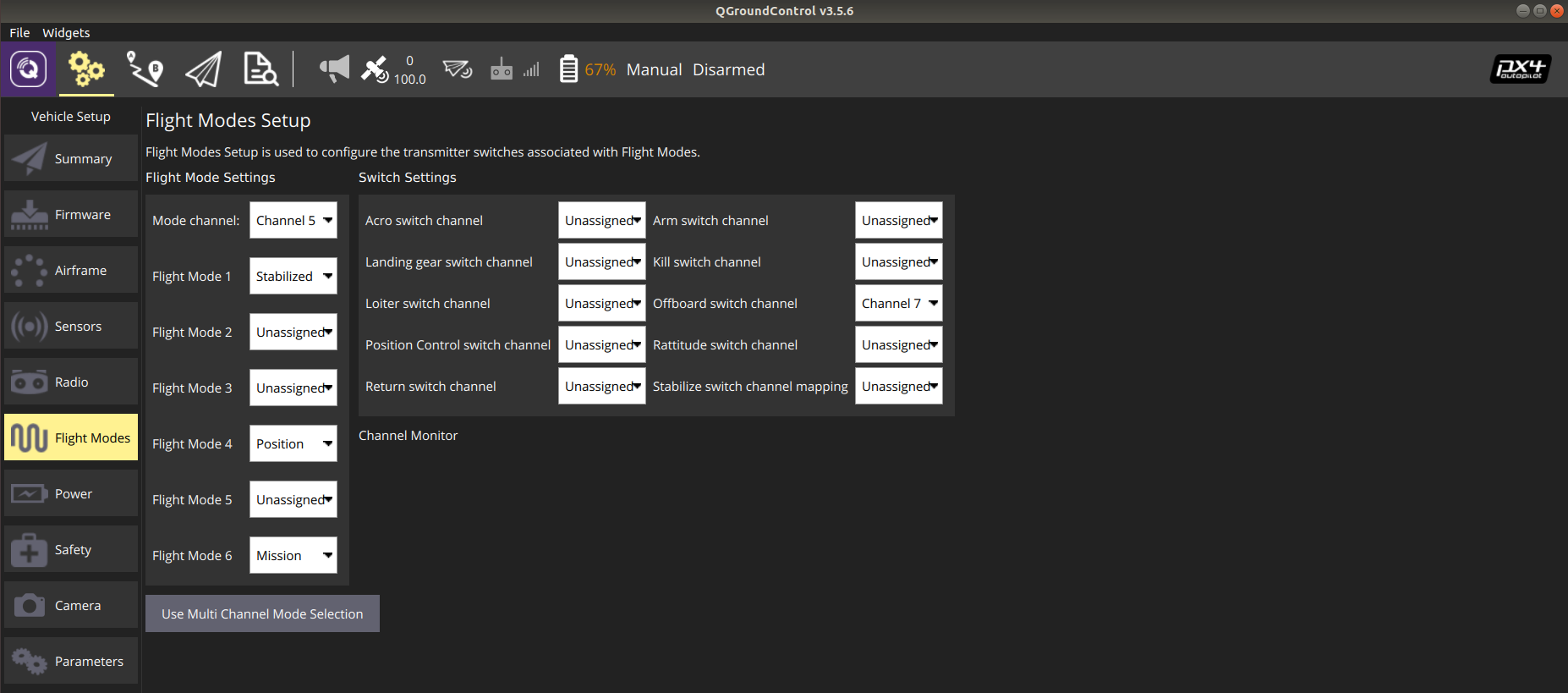
The switch setting for the RC transmitter can be viewed in the following picture for brevity:
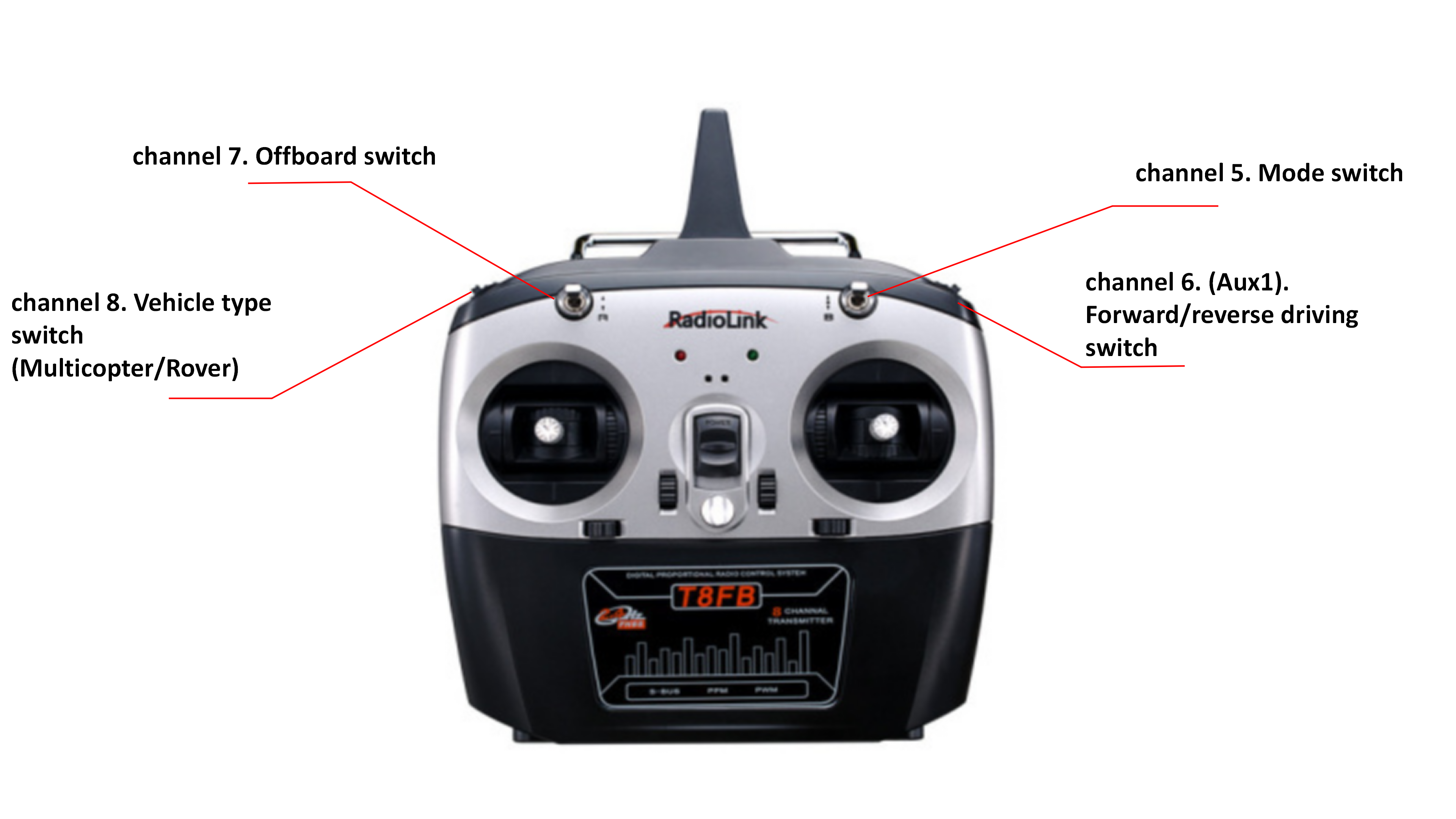
1.5 Power Calibration
The power source for the Scorpion V1 platform is a 6S Lipo battery. Only the voltage divider needs to be calibrated for onboard sensing. Users can use a multimeter to measure the battery voltage after powering on the platform, and enter the measured value after clicking the “Calibrate” button for the voltage divider.

2. Propeller Mounting
For the sake of transportation safety, the propellers are not mounted. Note carefully those rotation directions, and the wrench provided in the package can be used to save some efforts. Please refer to the figure below for guidance.
Scorpion flying rover
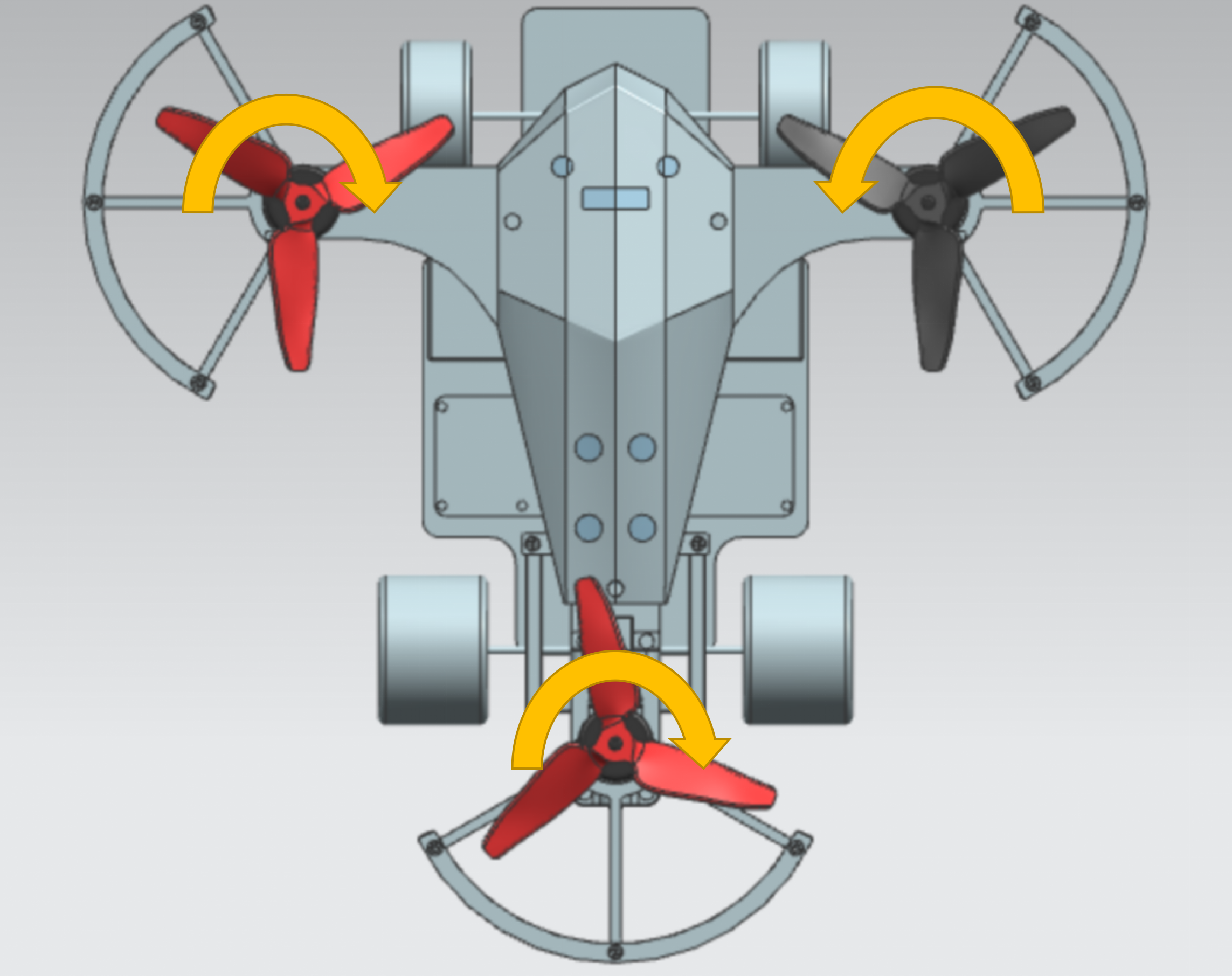
Falcon flying rover
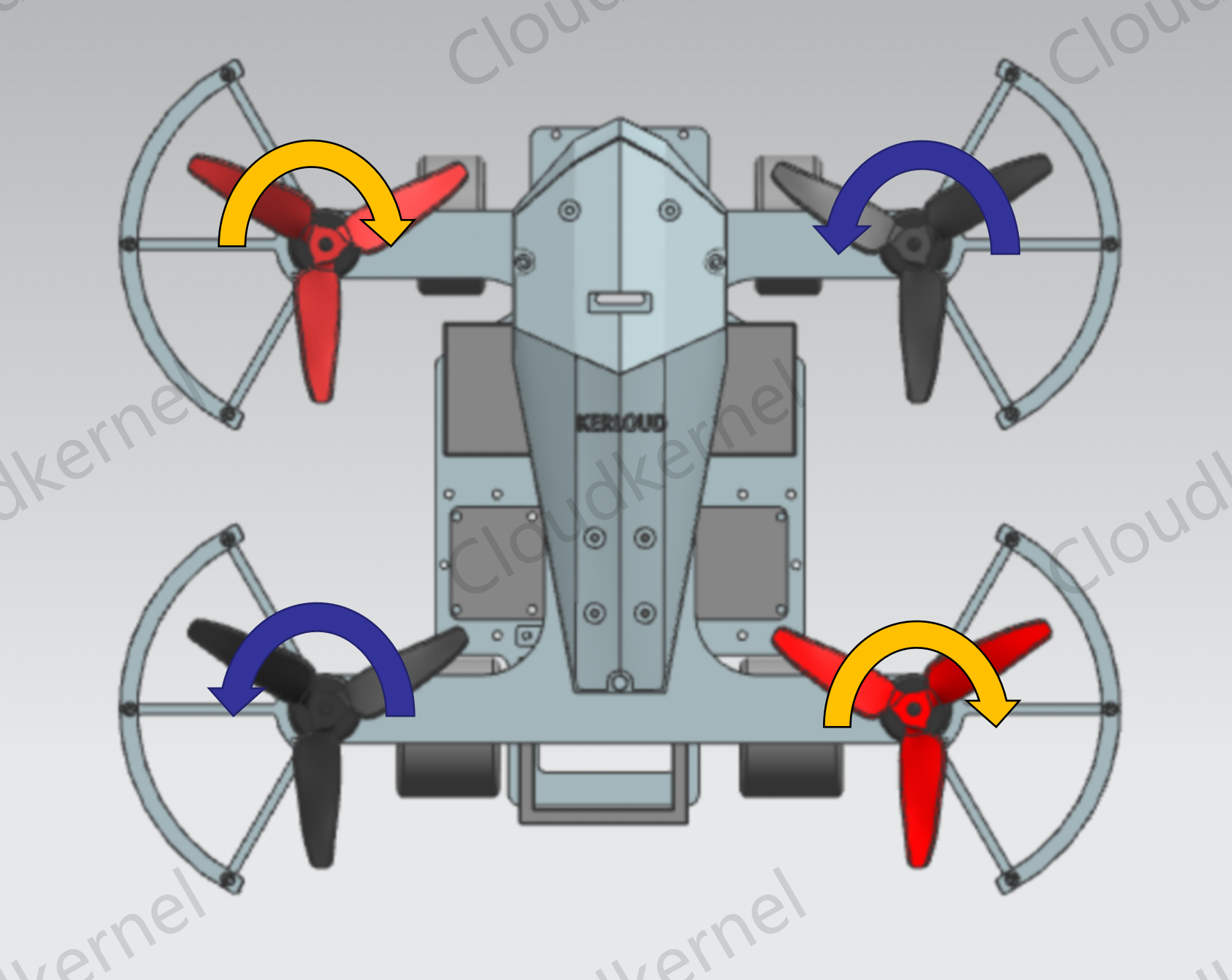
Caution
Users should always keep in mind that propellers must be removed during calibration process and other hands-on tasks.
3. Manual Driving in Rover Mode
The procedure for manual driving in rover mode is as follows:
Mount the battery ready.
Make sure that all switches are in their initial position and the throttle channel is lowered down.
Make sure that the vehicle type transition switch (channel 8 by default) is in the rover position.
Power on with the battery.
Turn on the transmitter.
Arm the platform by lowering down the throttle and move the yaw stick to the right, then we will hear a long beep from the machine. If the arm command is denied, we need to connect the platform wirelessly with the QGC software to see warning messages.
Switch the AUX1 stick (channel 6 by default) to the forward position, push the throttle and turn with the yaw stick, the rover can then be operated manually. The reversed driving can be realized by switching the AUX1 stick to the other position.
Disarm the flying rover by lowering down the throttle and moving the yaw stick to the left for about 10 seconds.
4. Manual Flight in Multicopter Mode
Hint
Instructions here are only applicable to Kerloud flying rover in outdoor environment. For those with vision-based localization settings, please refer to corresponding tutorials.
The position mode is the easiest way to get the machine fly in multicopter mode. Basic steps are listed in sequence:
Make sure that the battery voltage is sufficient, and the voltage should be above 4.0v per cell (24v for a 6S battery).
Mount the battery ready, and make sure that it will not fall down during flight.
Make sure that all switches in the transmitter are in their initial position and the throttle stick is pulled down to minimum.
Be certain that the vehicle type transition switch (channel 8 by default) is in the rover position at start.
Power on with the battery.
Turn on the transmitor.
Connect the telemetry with a computer, and start the QGC software. The QGC interface can provide full monitoring for the flying rover.
Wait for the GPS to be fixed. Usually we can hear a beeping sound after 2-3 minutes if the local GPS quality is fine, and the main LED in the pixhawk will turn green.
Arm the flying rover by pulling down the throttle and moving the yaw stick to the right, then we will hear a long beep from the machine. Please pay attention to channel differences between American and Japanese hands for the transmitter.
Switch the vehicle type transition stick to the multicopter position, propellers will then start rotating slowly.
Switch to the position mode with the specified stick (e.g. channel 5). The QGC will indicate the position mode if the mode switching succeeds, otherwise it will provide warning messages. Failure in the mode switching are mostly due to GPS quality, sensor calibration, etc.
Push the throttle stick slowly above the middle, and the machine will take off smoothly.
Pull down the throttle stick slowly if we’d like the flying rover to land.
Disarm the flying rover after it lands successfully by pulling down the throttle to minimum and moving the yaw stick to the left.